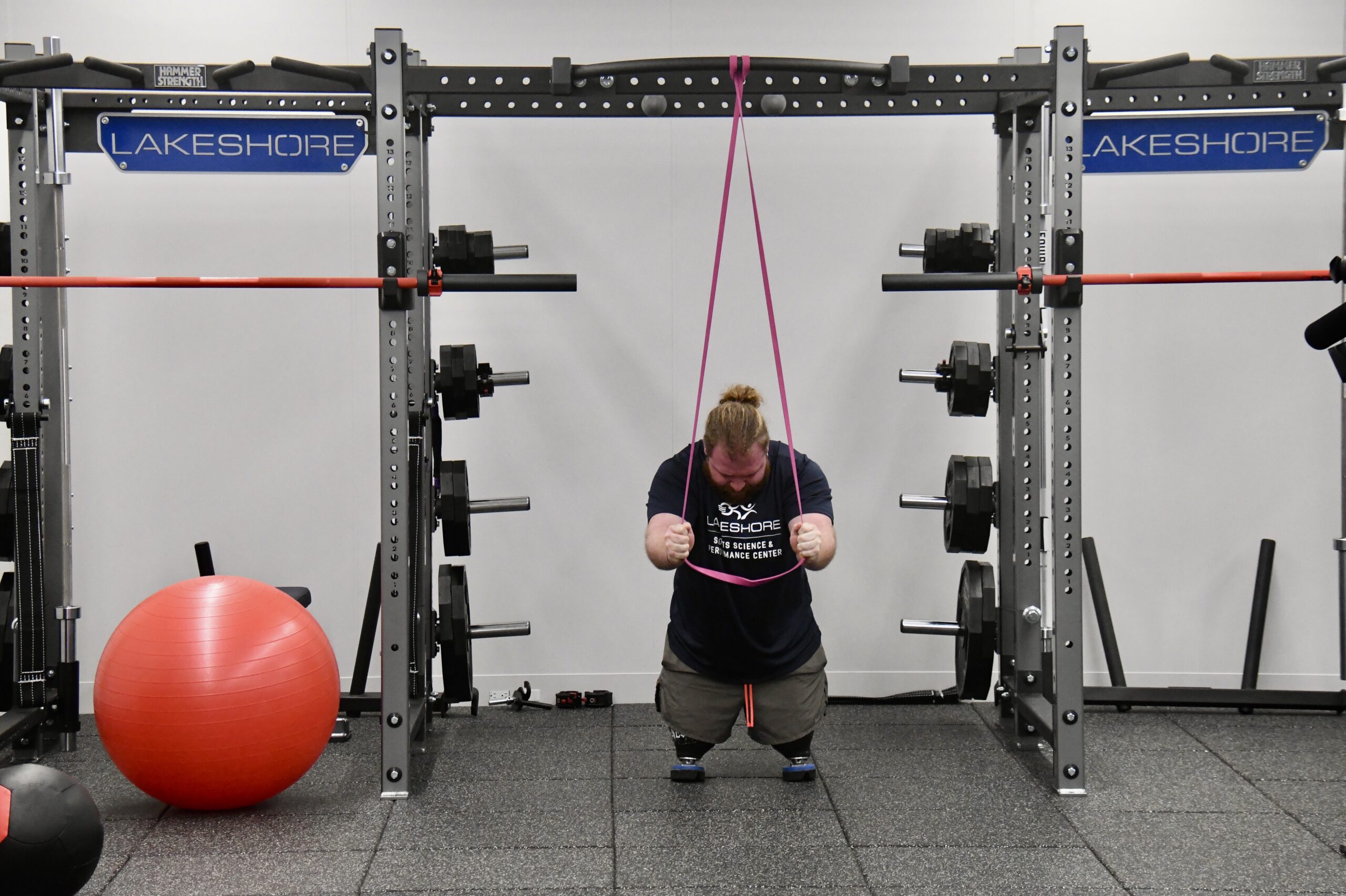
Ricky Castaneda has big plans for his sports future. And at the top of the list is to lead Team USA’s first blind soccer team in 2028 when the sport gains entry to the Paralympic Summer Games in Los Angeles.
In addition to being the country’s top prospect, the future star is also a data nerd, both of which factor into his appreciation for the new Sports Science & Performance Center at the Lakeshore Foundation in Birmingham, Alabama, which saw its grand opening on January 12.
“As a 23-year-old, you feel like you’re invincible,” said Castaneda, who joined several Paralympians on a panel discussion to mark the opening. “And you feel like there’s nothing else to do. But there’s always something else to do. From recovery, to balance, to anything you can think of — there’s always perfection going on.”
In an effort to boost his own performance, Castaneda was one of several athletes who spent the past few months in an advisory role to test the SSPC’s new strength and conditioning equipment, nutrition center and access to trainers in an effort to fine tune the center’s offerings. And with the center now open, athletes at all levels — but especially those on a high-performance track — will be able to benefit from that research.
“The Sports Science & Performance Center actually showed me that there is more — way more — work to do if I want to be a high-potential athlete at the ’28 Games,” he said.
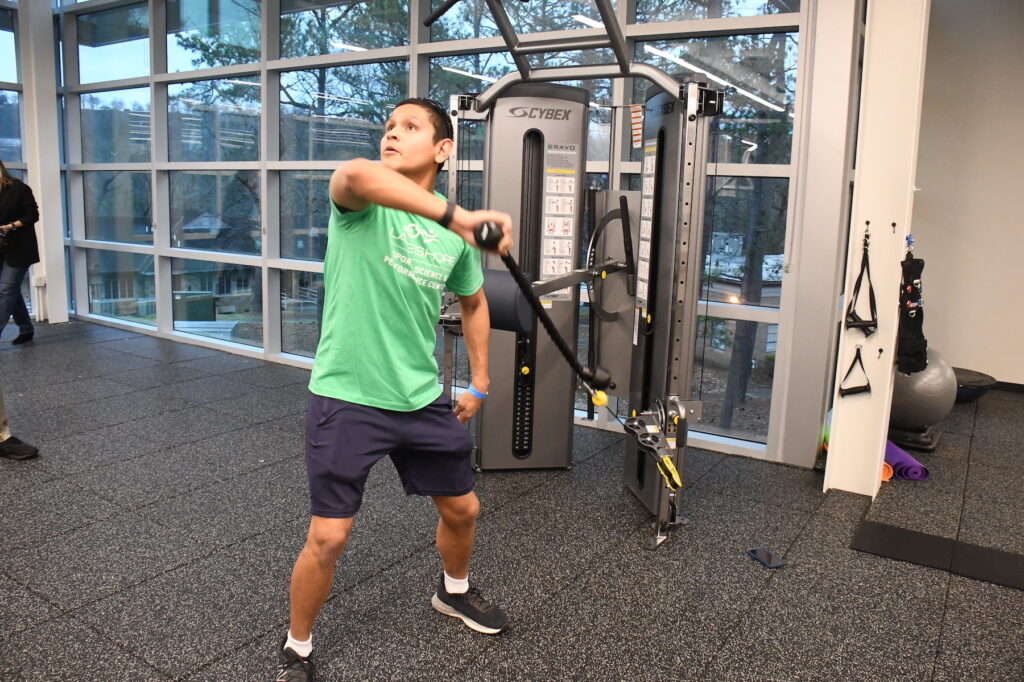
That kind of realization is music to the ears of John Kemp, Lakeshore’s president and chief executive officer, who led a multi-million-dollar effort to open the venue after 18 months of planning.
“The SSPC supports emerging and elite — disabled and non-disabled — athletes pursuing two critical goals consistent with our broader Lakeshore mission: success in sport and achieving a lifetime of health,” he said. “Here, athletes partner with our team to develop personalized plans targeted to achieve their athletic and fitness goals, whether that is making their community team or reaching the podium at the Paralympics.”
Adding to a Legacy
A focus on adaptive sports is nothing new for the Lakeshore Foundation, which sits on more than 40 acres outside of downtown Birmingham, with nine buildings on its campus that include gyms, dorms and other services. For 40 years, the organization has been a beacon for fitness, recreation, conditioning, research and advocacy, using adaptive sports as its center point. Since 2003, the foundation has been an official training site for the U.S. Olympic and Paralympic Committee. The world-champion wheelchair rugby team as well as boccia are governed by a subsidiary established by the foundation that operates out of the center.
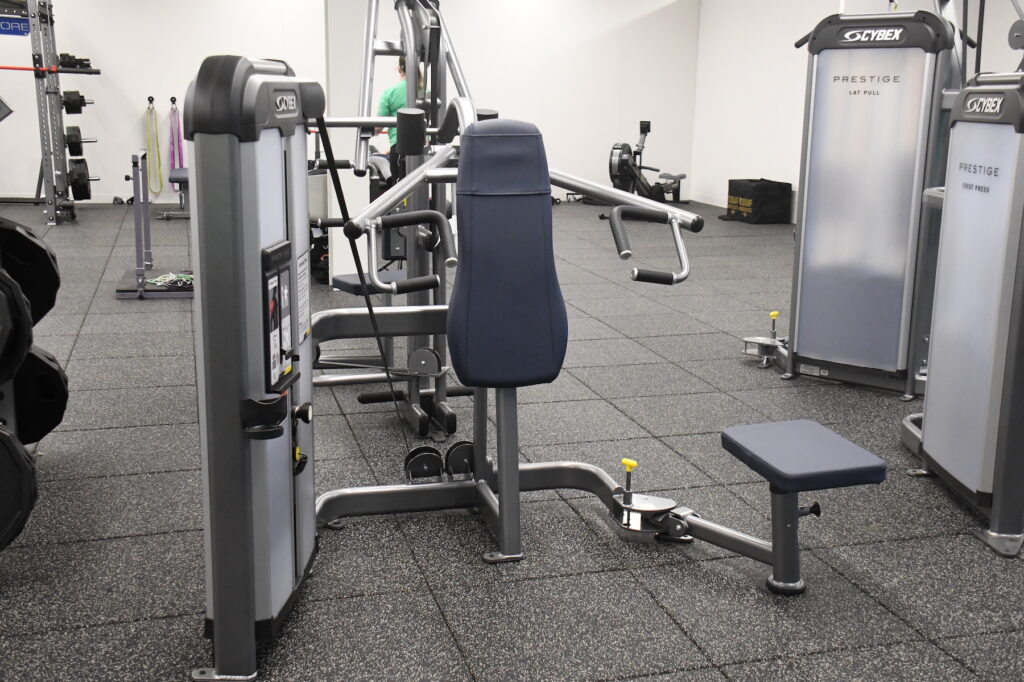
“We’ve got a strong relationship with mutual goals, reaching out to and supporting all of Team USA’s potential athletes on their athletic path.” said Julie Dussliere, the USOPC’s chief of Paralympics and internally managed sports. “That spectrum of supporting those athletes spans from someone just learning a sport to those who are on the Paralympic podium.”
Despite years of support for adaptive athletes, one key element that Lakeshore was missing, Kemp said, was a state-of-the-art performance and research center that could use technology and training to create programs for athletes that wanted to excel. When funding fell through for a research and consulting program that the University of Alabama at Birmingham was developing on campus, Lakeshore’s leaders got together to determine how they could reconfigure the space that had included a series of cubicles in order to meet those needs.
From Weights to Kitchenware
The result is the new SSPC, which includes a new strength and conditioning center with equipment modified for a wide range of disabilities; a performance lab that can test speed, strength, endurance and balance a nutrition center with kitchenware and equipment also modified for a range of uses; and a center dedicated to pre-exercise warm-up and post-exercise rest and recover.
“This is high-level training,” said Heather Pennington, a physical education professor at Lindenwood University who has been working with Castaneda and other athletes at the SSPC. “No matter where the athlete is in their plan or their training or age, every workout is designed specifically for each athlete. It’s really important that we are very specific in our design for level, for injury, for disability, for diagnosis, also for their sport.”
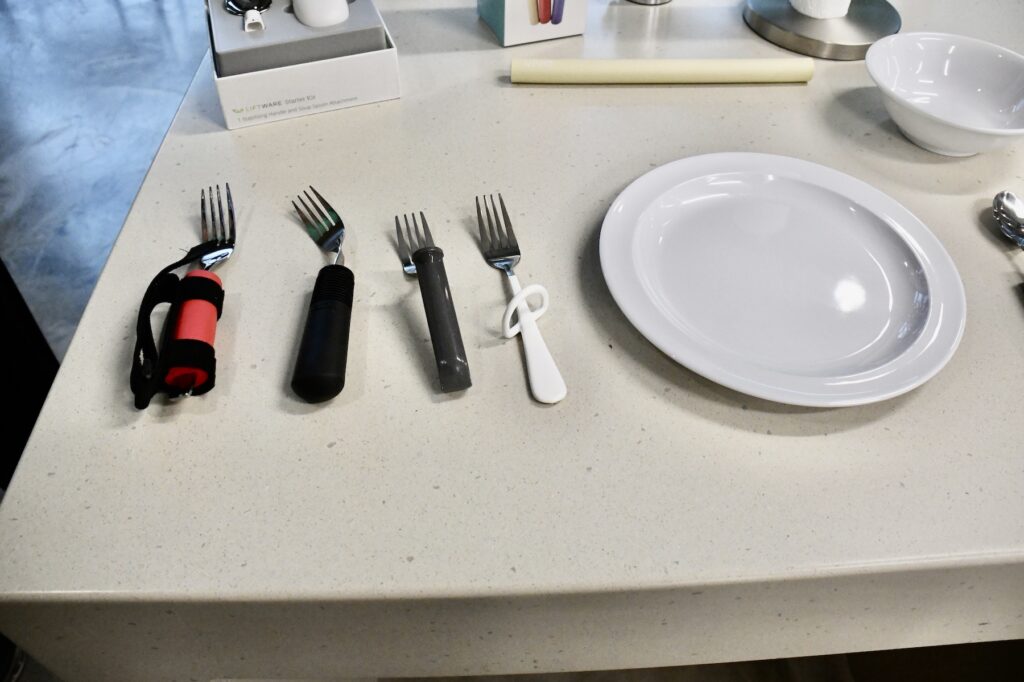
Of all of the new programs, the nutrition aspect was identified by athletes as being a top priority. The new kitchen facility will teach athletes how to better prepare their own meals. It features countertops that can adjust to the height of fully standing individuals or those in wheelchairs, oven doors that open sideways for easier access and kitchen utensils with angled handles that can be used by athletes who often have unique grips.
“It is absolutely incredible and we’re so excited about the opportunity that this is going to provide for all athletes — whether they are just participating at the grassroots level, or they are desiring to be a Paralympian someday,” Dussliere said. “Every one of those athletes on the pipeline is going to benefit from the SSPC.”
Training for the Podium
Brian Bell is one of many Lakeshore success stories. A native of Birmingham, he began training at the center as a child and quickly worked his way up the ranks in wheelchair basketball. He has since won two Paralympic gold medals (2016, 2020) and was on the U.S. team that won gold at the world championship in 2023 and the silver medal in 2014 and 2018. But he noted if Lakeshore had the SSPC to fine-tune his training when he was younger, his impressive resume could be even bigger.
“Maybe I would have been a five-time Paralympian with more countless medals,” he said. “But it’s great to have this facility now for the upcoming generation. I’m looking forward to how it can used for these up-and-coming athletes and how the next generation is going to continue on that journey and their success for Team USA.”
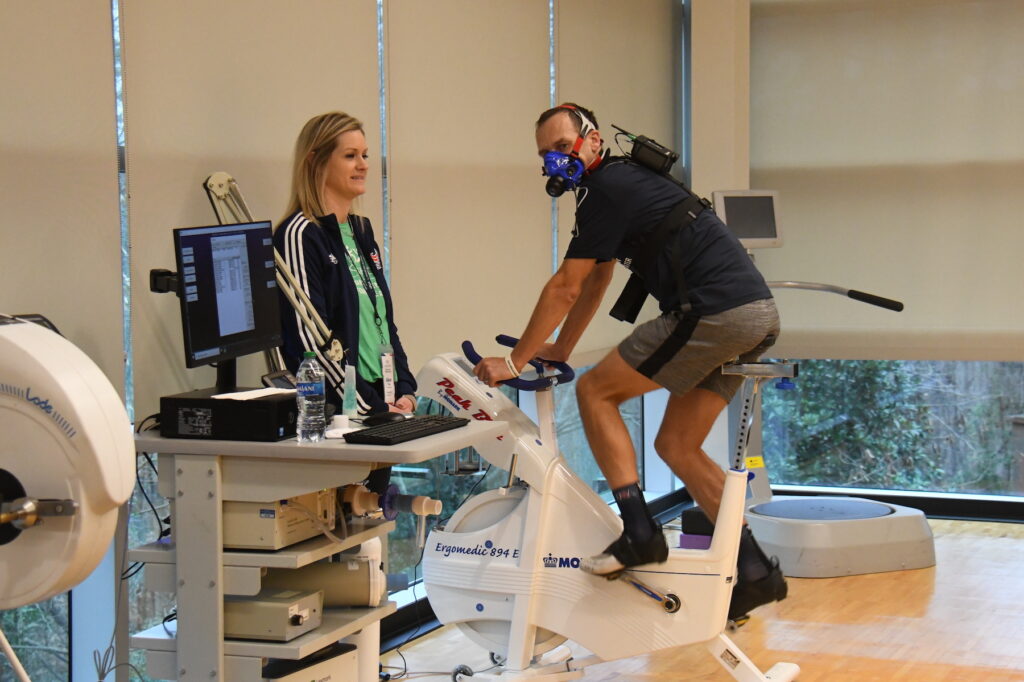
That’s already happening with Castaneda, who credits the nutrition plan and workouts he helped workshop over the past few months with making him stronger and giving him new data points to improve.
“I’m a data nerd — I love data,” he said. “I want to know how long it takes me to score a goal. I love every single little piece of data. And I implement it into my training.”
The Power of Adaptive Sports
While high-performance athletes will no doubt benefit, Lakeshore also hopes the typical weekend warrior will find value. Lakeshore has 3,000 members who use other facilities on campus for recreation and other programs. The hope is data sets established by elite athletes at the SSPC will provide valuable information when it comes to training everyday athletes to reach their ultimate potential, even if that potential is far from a Paralympic podium.
“The data that we derive from the athletes going through our system will be translated to our 3,000 members who come in here daily, weekly, monthly and then spread it all across the country to people with disabilities as to how to live a healthier life,” Kemp said. “It’s really valuable information.”
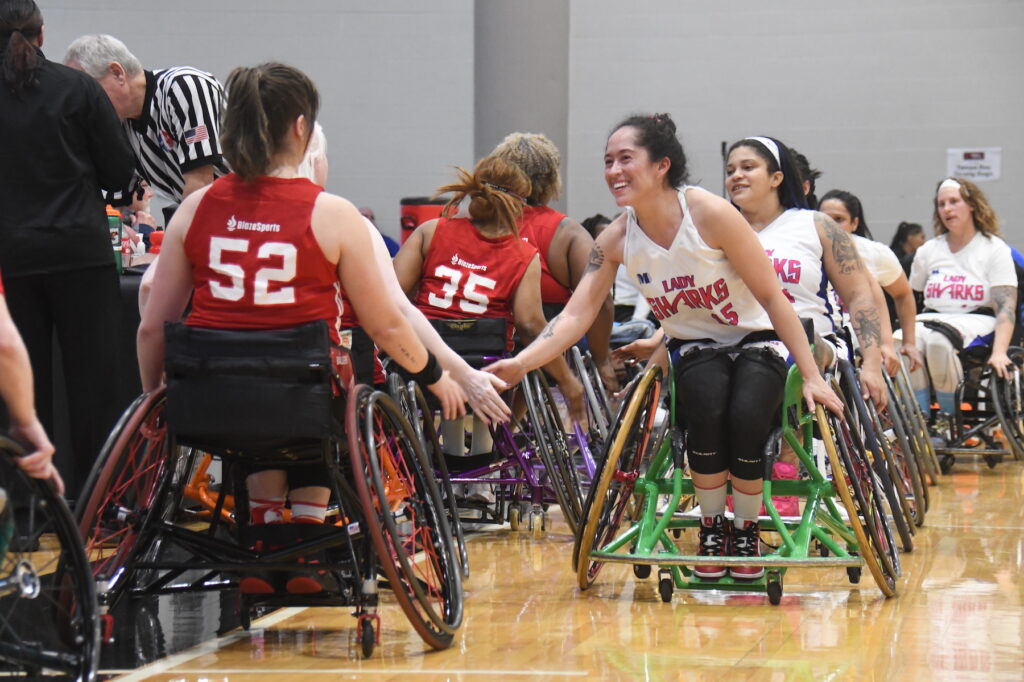
As more elementary and high schools also integrate adaptive sports programs to comply with federal regulations, Lakeshore hopes the SSPC and the work the foundation does to provide access to competitive teams could be replicated. Lakeshore fields several teams for local players in Birmingham that have gone on to win national championships in a variety of competitions.
“More and more students are going to get to the college level and there is going to be more pressures to offer more services,” he said. “Then you’re going to have sports science and performance centers like ours probably popping up and competing someday. That’s all the better. These kids need every opportunity, just like the Olympic athletes.”
For Kemp, the SSPC is a dream come true. As a disabled leader for decades and a co-founder of the American Association of People with Disabilities, he knows firsthand the power that adaptive sports have.
“I’ve witnessed how disability sport is a great equalizer, removing barriers, changing the narrative and shattering misperceptions,” he said. “The SSPC is where these ideals come to life. When the public sees a person with a disability pursuing health and competitive sports, it fills gaps by amplifying a message that we are more alike than we are different.”










 Copyright © 2024 by Northstar Travel Media LLC. All Rights Reserved. 301 Route 17 N, Suite 1150, Rutherford, NJ 07070 USA | Telephone: (201) 902-2000
Copyright © 2024 by Northstar Travel Media LLC. All Rights Reserved. 301 Route 17 N, Suite 1150, Rutherford, NJ 07070 USA | Telephone: (201) 902-2000